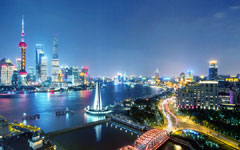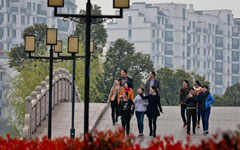China's new plan targets quality urbanization
(Xinhua) Updated: 2014-03-18 13:24BEIJING - Sprawling cities, low efficiency in land use and oversized roads and squares are among the problems China plans to avoid in the next 17 years, according to the country's latest program on urbanization.
The National New-type Urbanization Plan (2014-2020), issued on Sunday by the Central Committee of the Communist Party of China and the State Council, is the country's first official plan on urbanization.
It will serve as a guideline for China's urbanization and has summarized lessons from home and abroad, said Xu Hongcai, head of the Department of Information under the China Center for International Economic Exchanges.
 |
 |
 |
The registered urban population, or those with city "hukou" under China's household registration system, accounted for only 35.7 percent of China's total population by the end of 2013, according to the National Bureau of Statistics (NBS).
By 2020, permanent urban residents will reach about 60 percent of the population, while residents with city hukou should account for about 45 percent of the total population, according to the plan.
The number of rural migrant workers rose 2.4 percent to 268.94 million by the end of 2013 from a year earlier, accounting for 19.76 percent of the country's total population, according to the NBS.
But they do not have access to the same public services as other urbanites with city hukou.
The government has vowed to help 100 million migrant workers and other permanent urban residents to obtain urban hukou.
"The plan has put human beings at the center of urbanization," Xu said.
The country should guide the reasonable flow of population, help rural residents become urban citizens in an orderly manner and make basic urban public services available to all permanent urban residents, it stressed.
The plan highlights ecological progress and urbanization quality, Xu added.
Pan Jiahua, director of the Institute of Urban and Environmental Studies at the Chinese Academy of Social Sciences, warned against "pseudo-low-carbon" styles.
Some cities have planned super-high buildings to improve efficiency in land use, but it takes a lot of fossil energy to bring water to a floor hundreds of meters high, making them "pseudo-low-carbon," Pan said.
China will boost construction of green cities, using ecological advancements in urban development to create green production modes, green lifestyle and green consumption modes, the plan said.
- NHTSA says finds no 'defect trend' in Tesla Model S sedans
- WTO rare earth ruling is unfair
- Amway says 2014 China sales may grow 8%
- President Xi in Europe: Forging deals, boosting business
- CNOOC releases 2013 sustainability report
- Local production by Chery Jaguar Land Rover this year
- Car lovers test their need for speed in BMW Mission 3
- China stocks close mixed Monday

















